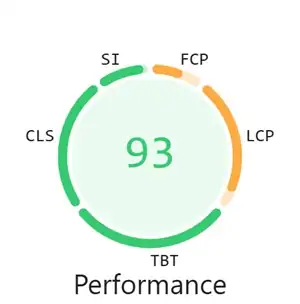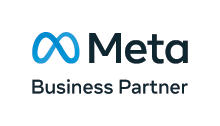Technical SEO and security compliance is critical for establishing a website’s trustworthiness and expertise (E-E-A-T), which is paramount in the financial services sector. Data breaches and security failures in financial institutions often make headline news and can lead to a catastrophic loss in customer confidence.
Establishing a secure foundation is perhaps the single most important task for any financial services SEO agency. To master technical SEO, you must understand how site speed, secure indexing, core web vitals, and strict compliance with regulations to drive organic growth.
Why technical seo is non-negotiable in finance
Technical SEO has a significant role in Your-Money-Your-Life (YMYL) sectors like finance. The added layer of scrutiny for firms operating in the sector requires special attention to building trust and establishing authority. The E-E-A-T requirements of Google and AI platforms such as ChatGPT prevent low quality or misleading information from surfacing in prominent search results or AI answers.
Poor performance or security directly impacts customer trust and can expose your organisation to regulatory risk.
Optimising core web vitals and site architecture for financial users
Addressing Google’s fundamental ranking factors, the core web vitals (CWV) and specific complex structural issues common to large financial sites not only helps improve organic search ranking but also improves the user experience.
Page speed optimisation

The most common culprits reducing page speed in financial sites are:
- Uncompressed or poorly sized images
- Excessive scripts, especially third-party scripts
- Not prioritising above-the-fold content
- Heavy compliance banners or consent managers
- Over-engineered security and compliance layers
- Bloated frameworks and legacy content management systems
- Lack of caching and CDN use
Crawlability and indexation
Use of sitemaps (HTML and XML) can increase discovery and indexing, especially for large enterprise site. Conversely, appropriate setup of the robots.txt directives can stop confidential information from being crawled and prevent wasting crawl budget on unimportant pages.
Canonical URL and hreflang declarations can reduce page duplication and facilitate identification of local versions of any content on the site. This is especially important for multi-national, multilingual financial sites. Read our detailed article to learn how to optimise global enterprise sites for multilingual & multi-market search.
Mobile-first indexing
Ensuring mobile-friendliness for key pages on your site will improve user experience, but this shouldn’t just be limited to your product and services pages. Interactive tools, financial calculators, and economic reports may also be read on mobile devices, making it just as important to ensure all your content renders well for mobile device users.
Security and compliance-driven SEO
Regulation around security for financial services is strict in most countries around the world. The security requirements from Google for YMYL content is covered mostly by compliance minimum standards. Technical SEO in the finance sector directly links security and E-E-A-T.
-
Full HTTPS implementation
It goes without saying that websites dealing with financial information must use end to end SSL. It’s especially important to avoid mixed content errors here.
-
Security headers
Webmasters should enforce HTTP Strict Transport Security (HSTS), which is a security policy that forces a web browser to interact with a website using only secure HTTPS connections, even if the user tries to access it via HTTP. Content Security Policies (CSP) are also recommended to protect financial websites from attacks like cross-site scripting (XSS) and clickjacking.
-
SSL certificate management
Proper SSL certificate configuration, and timely renewal go a long way in maintaining a secure foundation for the website, which signals consistent trustworthiness to Google.
-
Incident response and reporting
While no one expects to get hacked, implementing DDoS protection and fast incident response processes can support site availability, which is an important ranking factor for YMYL content on Google. Cloudflare reports that financial sites face 3x more DDoS attempts than regular web traffic. When downtime does occur, mean time to recovery (MTTR) becomes a crucial SEO and user experience factor.
Implementing schema markup for financial services rich results
We’ve talked extensively about the impact of schema on AI search visibility, and its importance for AI overviews and rich results on organic search. In the finance industry, schema markup is important for zero-click search results, where users find the information they need on the search results page itself, without needing to navigate to a website.
Schema makes product, branch, and service info easily machine-readable, improving the chances of that information being shared directly on the search results. The main types of schema that can be used by financial services sites are:
-
FinancialProduct schema
Markup for products provided to consumers and businesses by financial institutions such as banks, insurance companies, brokerage firms, consumer finance companies, and investment companies. Technical details about FinancialProduct can be found on schema.org. More specific types include:
-
Organization schema
This helps enhance the knowledge panel for your brand and local branch visibility. Maintaining name, address, and phone number (NAP) consistency on this schema is especially important for local branch SEO. We recommend reviewing the spec of Organization schema and providing information for the relevant properties.
-
FAQPage schema
While this isn’t a requirement, AI search engines prefer FAQ-style content, especially when it’s written in a conversational format. Marking up a dedicated page with question and answer styled content with FAQPage schema or individuals Question and Answer content within a regular page with the respective schema can help attain rich results for common financial queries.
-
LocalBusiness schema for local branches
A particular physical business or branch of a finance organisation can use the LocalBusiness schema to highlight key information about the branch, services provided, and operating hours. Learn more about the local SEO considerations for banks, IFAs, insurance brokers and other financial services providers.
Technical requirements of key regulations (FFIEC, NYDFS, GDPR, CCPA)
The strict regulatory landscape for financial institutions lays down key technical requirements that all finance businesses must adhere to for the protection of their customers. Failure to comply can not only lead to severe penalties for culprits but also risk ranking penalties on Google. On the other hand, complying with these regulations sends a strong positive signal about your firm’s E-E-A-T on security and legal matters.
Key technical requirements include:
- Data encryption & privacy controls – securing personally identifiable information and data at rest and in transit.
- Audit trails and logging – chronological records documenting all key user and system activities.
- Third-party risk management – cover third-party scripts, widgets, and APIs, as well as link building and digital PR content in regulated financial markets. It’s also important for SEO to consider the impact of third-party resources on site speed.
Handling JavaScript, SPAs, and dynamic content for crawlers
Complex technical SEO issues common to modern fintech, insurtech and banking platforms arise from complex JavaScript (no matter whether it’s good old AJAX, or React, Angular or Vue) code, single page applications (SPAs) and dynamic personalisation systems. SEO best practice is to use server-side rendering (SSR) or dynamic rendering for critical financial content.
Discover our comprehensive SEO services for financial businesses, and our specialist fintech SEO and insurance SEO services.
Vulnerability scans & penetration testing
As mentioned earlier, website availability is a ranking factor and directly impacts E-E-A-T. Vulnerability scans and regular penetrations testing should be part of an ongoing SEO strategy to prevent un-indexing due to security breaches. Google and AI-based search engines have a low tolerance for security issues in YMYL sectors like finance.
API and data feed SEO
Ensuring that content pulled from internal or third-party APIs, such as product listings, interest rates, financial data or event feeds, is discoverable and indexable by search engines and LLMs (for GEO). This involves structuring API-delivered content with clean, semantic, crawlable HTML rather than JavaScript-dependent rendering, and maintaining consistent canonical URLs for changing datasets.
Summary
Integrating technical compliance into a continuous SEO workflow ensure that visibility and credibility grow hand in hand. In regulated sectors like finance, aligning site architecture, data handling, and disclosure with technical SEO best practices will improve organic search ranking and build long-lasting trust with your customers.
When working with financial services firms, we aim to transform compliance from a constraint into a competitive edge, where every technical decision strengthens both search performance and regulatory compliance.
Learn more about our finance SEO agency services.
About the Author
Lourenço is a Senior SEO Executive at AccuraCast, responsible for the strategic and tactical elements of Organic channel acquisition. He has over 10 years of experience working with international financial services, travel and retail brands in Europe, North and South America.


 It goes without saying that websites dealing with financial information must use end to end SSL. It’s especially important to avoid mixed content errors here.
It goes without saying that websites dealing with financial information must use end to end SSL. It’s especially important to avoid mixed content errors here. Markup for products provided to consumers and businesses by financial institutions such as banks, insurance companies, brokerage firms, consumer finance companies, and investment companies. Technical details about
Markup for products provided to consumers and businesses by financial institutions such as banks, insurance companies, brokerage firms, consumer finance companies, and investment companies. Technical details about 








